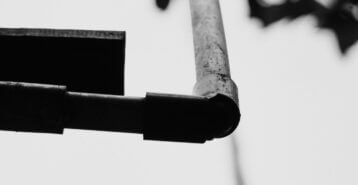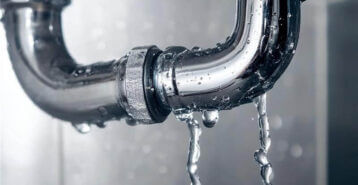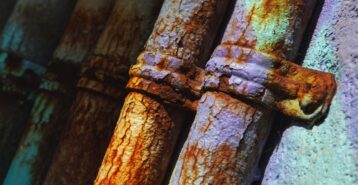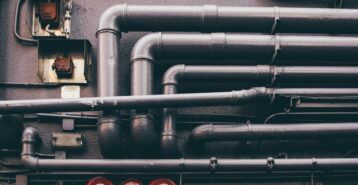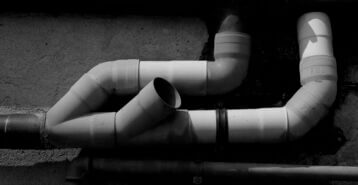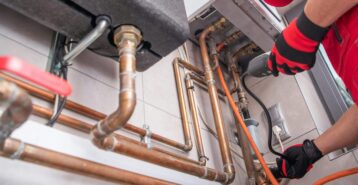Understanding Plumbing Pipes
Plumbing pipes are the backbone of a home’s water supply and drainage system. Selecting the right type of pipe ensures not only efficiency but also long-term durability. The ideal pipe material depends on several factors, including water quality, temperature, pressure, and the specific application (e.g., water supply or drainage). With advancements in materials and technology, homeowners now have a range of options to suit different budgets and requirements. Below, we’ll break down the common types of plumbing pipes, their features, and their best use cases.
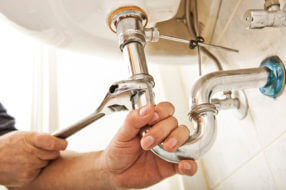
Common Types of Plumbing Pipe
Several types of plumbing pipes are commonly used in residential plumbing systems. Each type has distinct advantages, disadvantages, and cost considerations.
1. PEX Pipes: Flexible and Affordable
- Cost: $0.30 to $0.82 per linear foot
- Uses: Water supply lines for hot and cold water
PEX (cross-linked polyethylene) pipes are known for their flexibility and ease of installation. They are an excellent choice for modern plumbing systems and are often used in renovations or new construction projects. PEX pipes can bend around corners, reducing the need for connectors and fittings.
Pros:
- Easy and quick installation
- Resistant to freezing and bursting
- Affordable compared to other options
Cons:
- Not suitable for outdoor use due to UV sensitivity
- May require special tools for installation
2. Copper Pipes: Reliable and Long-Lasting
- Cost: $1 to $3 per linear foot, larger copper pipes (1 ½” to 2”) used for drain, waste, and vent applications can cost $6.70 to $8.40 per linear foot
- Uses: Hot and cold water supply, especially in high-temperature or high-pressure systems
Copper pipes are a traditional plumbing choice due to their strength, durability, and resistance to corrosion. They are suitable for both hot and cold water systems and have an impressively long lifespan, often exceeding 50 years.
Pros:
- Long-lasting and corrosion-resistant
- Handles high temperatures and pressure
- Does not leach chemicals into the water
Cons:
- Expensive compared to other materials
- Can corrode if water has a high acidity level
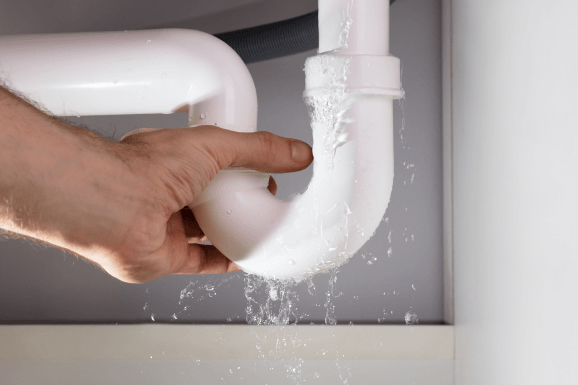
3. PVC Pipes: Cost-Effective and Durable
- Cost: $.50 to $5 per linear foot
- Uses: Drainage systems, vent systems, and cold water supply
PVC (polyvinyl chloride) pipes are lightweight, affordable, and easy to install, making them a popular choice for non-pressurized systems like drainage and venting. PVC is not suitable for hot water applications due to its lower heat resistance.
Pros:
- Cost-effective and widely available
- Resistant to rust and corrosion
- Lightweight and easy to install
Cons:
- Not suitable for hot water systems
- Can degrade under UV exposure if used outdoors
4. CPVC Pipes: Versatile and Heat-Resistant
- Cost: $0.40 to $1.56 per linear foot
- Uses: Hot and cold water supply, especially in areas with high temperatures
CPVC (chlorinated polyvinyl chloride) pipes are similar to PVC but are treated with chlorine to improve their heat resistance. They are an excellent choice for hot water systems and are often used in homes where high water temperatures are common.
Pros:
- Can handle hot water temperatures up to 200°F
- Resistant to chemical corrosion
- Easy to install
Cons:
- More expensive than PVC
- Can become brittle over time
5. Galvanized Steel Pipes: Strong but Outdated
- Cost: $2 to $5 per linear foot
- Uses: Older plumbing systems, typically in homes built before the 1970s
Galvanized steel pipes were once the standard for residential plumbing due to their strength and durability. However, they are prone to corrosion and are rarely used in modern installations. Many homeowners replace these pipes with newer materials like PEX or copper during renovations.
Pros:
- Strong and durable
- Suitable for high-pressure systems
Cons:
- Prone to corrosion, leading to reduced water flow and contamination
- Heavy and difficult to install
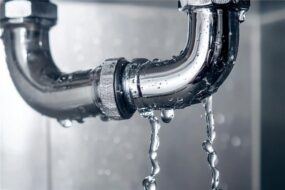
Choosing the Right Plumbing Pipe for Your Home
When selecting the best type of plumbing pipe, consider the following factors:
- Budget: PEX and PVC pipes are affordable options, while copper and CPVC may require a higher upfront investment.
- Application: Use PVC for drainage, CPVC for hot water, and PEX or copper for water supply lines.
- Climate: Homes in colder regions benefit from the freeze resistance of PEX pipes.
- Water Pressure: Copper pipes are ideal for high-pressure systems, while PVC and PEX are suitable for standard applications.
- Durability: For long-term reliability, consider copper or CPVC, especially in areas with high water temperatures.
Consulting with a licensed plumber can help ensure you choose the right material for your home’s specific needs.
Long-Term Benefits of Quality Plumbing Pipes
Investing in high-quality plumbing pipes offers several long-term advantages:
- Reduced Repairs: Durable pipes minimize the likelihood of leaks, clogs, and other plumbing issues.
- Increased Lifespan: Materials like copper and CPVC can last 50 years or more, reducing the need for frequent replacements.
- Improved Water Quality: Non-corrosive materials like PEX and CPVC ensure clean, safe water for your family.
- Energy Efficiency: Pipes with proper insulation, such as CPVC and copper, retain heat better, lowering energy bills for hot water usage.
Cost of Plumbing Pipes
The cost of plumbing pipes varies depending on the material:
- PEX Pipes: $0.30 to $0.82 per linear foot
- Copper Pipes: $1 to $10 per linear foot
- PVC Pipes: $0.50 to $5 per linear foot
- CPVC Pipes: $0.40 to $1.56 per linear foot
- Galvanized Steel Pipes: $2 to $5 per linear foot
Additional costs may include installation, fittings, and labor. Professional installation typically adds $500 to $1,500, depending on the scope of the project. Plumber rates per hour can range from $45 to $150 as of 2025, influenced mostly by geographic location, the plumber’s experience, and the job’s complexity.
Understanding the types of plumbing pipes available and their respective advantages can help homeowners make informed decisions for their plumbing systems. Whether you need the flexibility of PEX, the durability of copper, or the affordability of PVC, selecting the right material ensures a reliable and long-lasting system.
For more information on plumbing pipe costs and to find a licensed contractor, visit Modernize’s Plumbing Repair Cost Guide. Let Modernize connect you with trusted professionals to handle your plumbing projects with precision and care.
Compare top-rated plumbing pros in your area.
Read real homeowner reviews, explore qualifications, and view promotions. Modernize makes it easy to browse professionals and find one that will be perfect for your project.

